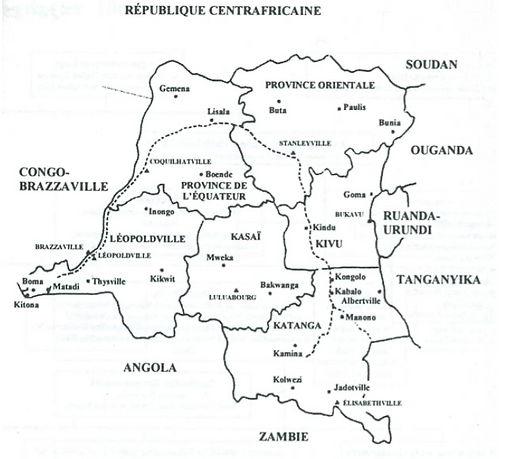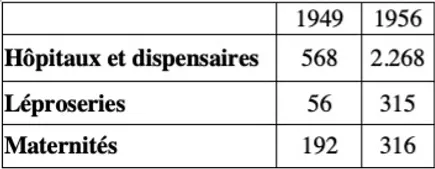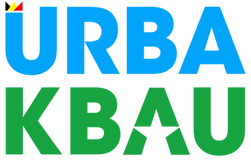Documentation
The joint achievements of Belgians and Congolese in Africa
The geography of the Belgian Congo and its administrative and legal structures
Map of the Congo (1958)

Area of the Congo: 2,345,400 km2 (80 times Belgium).
Ruanda-Urundi (United Nations trust territory, entrusted to the Belgian administration: 54,172 km2 (twice Belgium).
Population on January 1, 1959: 14,500,000 inhabitants
Non African population, in Belgian Congo:
Mainly European 115,157 including 87,736 Belgians, 5,361 Portuguese, 3,718 Italians, 3,483 Greeks, 2,380 French, 2,674 British, 1,357 Dutch.
Other nationalities: 2,030 Americans, 825 Swiss, 539 Luxembourgers and fewer, Swedish, Canadian, German, Polish, Spanish, some Turks, Norwegians, Russians, Danes, and Asians.
In terms of activities, there were:
– 43.9% of agents of private companies
– 18.7% of state agents (civil servants)
– 22.1% of settlers
– 15.3% of missionaries
Political and administrative organization
In 1908, the Belgian Parliament decided to accept the inheritance of the Independent State of Congo that Leopold II wished to bequeath to him. At the time, the colonial policy was clearly defined: the protection and promotion of local populations.
The Belgian Congo has a legal personality distinct from that of the Metropolis; it is governed by specific laws; the assets, budgets, and administrations remain separate.
Power is concentrated in Brussels. The Chambers vote on the colonial budget and the Minister for the Colonies, who receives the advice of the Colonial Council, is responsible to them. The Governor-General heads the local administration. The territory of the Congo is divided into six provinces, placed under the authority of provincial governors. Each province represented a territory several times equal to Belgium, divided into districts (26 in total), these into territories (135 in total) and then into chiefdoms or extra-customary centres headed by Congolese.

Justice
The coexistence of unwritten customary law and written law of European origin has given rise to a rather complex judicial system, largely governed by the principle of the separation of powers.
The old customary law applied by the village elders remains applicable as long as it is not contrary to public order and the law.
Education
Fundamental principle: generalize literacy and education for all, which provided for the gradual expansion into a pyramid from the bottom, therefore generalized primary education, then secondary and vocational education, in 25,000 schools.
As for the training of elites, preference was given in 1953 to the creation in the Congo of two universities (Léopoldville and Elisabethville, of which that of Léopoldville has a nuclear research reactor, the only one in black Africa) where young Congolese are pursuing their studies at a level equal to that of universities in Belgium. – the equivalence of diplomas with those of Belgian universities in total -, in a context close to the realities of their country rather than seeing them uprooted abroad. In 1959/1960: 1,682,195 children in school, i.e. almost all children of primary school age.
59,393 pupils in secondary or vocational education.
From 1953, the opening of this education to the mixed: Congolese and Europeans.
763 students attend the courses of the various university faculties.
Medicine
A remarkable effort has been made: not only in the creation of a dense network of quality hospitals and dispensaries but also in the free care provided to the Congolese and European populations everywhere.

Each year, 6 million Congolese, or about half of the population, undergo a free medical examination independently of those who come to consult for specific conditions.
Fight against major epidemics, treated and healed :
12,314 cases of trypanosomes, 141,096 cases of yaws, 267,226 cases of leprosy, 57,329 cases of syphilis and 23,904 cases of tuberculosis.
To the official network must be added private institutions and missions which together represent 6,000 medical centres totalling 86,000 beds, ie one bed for 160 inhabitants.
The medical staff included 850 doctors and more than 8,000 medical auxiliaries and health workers (Congolese and Europeans).
Transportation
Road network: 195,213 km of roads maintained permanently, and accessible all year round by private cars)
Rail network: 5,241 km including several hundred km electrified.
Waterways: 14,597 km.
Air traffic: 3 international airports and several dozen secondary airports.
Energy
Thirty hydroelectric power stations and a hundred thermal power stations covering the energy needs of cities and industries.
Installed power: 700,000 kW – energy produced: 2,800,000,000 kWh
Economy
As of December 31, 1959: 1,473,330 Congolese employees (and paid).
Standard of living of the Congolese: from 1950 to 1957, the index increased from 100 to 176.1.
Congolese worker average wage index:
From 1950 to 1958, the index went from 100 to 237 for an increase in the cost of living of 20% at the same time.
In 1958, the GDP of $ 90 per capita was the highest in Africa. The increase in total GDP from 1920 to 1959 is on average 4.8% per year, that of marketed GDP is 5.9% per year which is exceptionally high. The level of economic development and the diversification of the sectors as well as the sophistication and the quality of the productions had raised the Congo of 1960 to the level of a country ready for agro-industrial . take-off
A recent study by the International Monetary Fund has calculated that to catch up to the standard of living experienced in the Congo in 1959, at a rate of growth of 5% per year, it would be necessary to wait until the year 2075.
Trade
Exports in 1959: 1,630,000 tonnes for 24,788,000,000 BEF ($ 495,760,000).
Imports in 1959: 1,372,000 tonnes for 14,994,000,000 BEF ($ 299,880,000).
Mining resources, among others:
A first world producer of industrial diamonds.
Productions
– Copper: annual tonnage of 250,000 tonnes (4th producer in the world)
– Cobalt: 5,500 tonnes, i.e. 75% of world production
– Zinc: 6th world producer
– Tin: 9th world producer
– Silver: 118 tonnes
– Gold: 11,500 tonnes
– Coltan (Tantalo-columbite): 156 tonnes
– Manganese: 367,000 tonnes
– Coal: 419,499 tonnes
Agriculture and Livestock
Flourishing agriculture has developed, avoiding any risk of starvation and famine.. In addition, a wide range of 20 products was exported (which is exceptional for a developing country), representing 40% of the value of exports:
– Palm oil (6th producer in the world).
– Cotton (3rd producer in Africa).
– Raw wood, coffee, rubber, bananas, oil cakes were important agricultural products representing a significant tonnage.
A large network of INEAC (National Institute for Agronomic Studies in Congo) stations has been created to study the improvement of the cultivation methods of the main agricultural productions and introduce new breeds of cattle in order to allow a significant improvement. food for local populations. Fish farming has also appeared (2,000 ponds).
